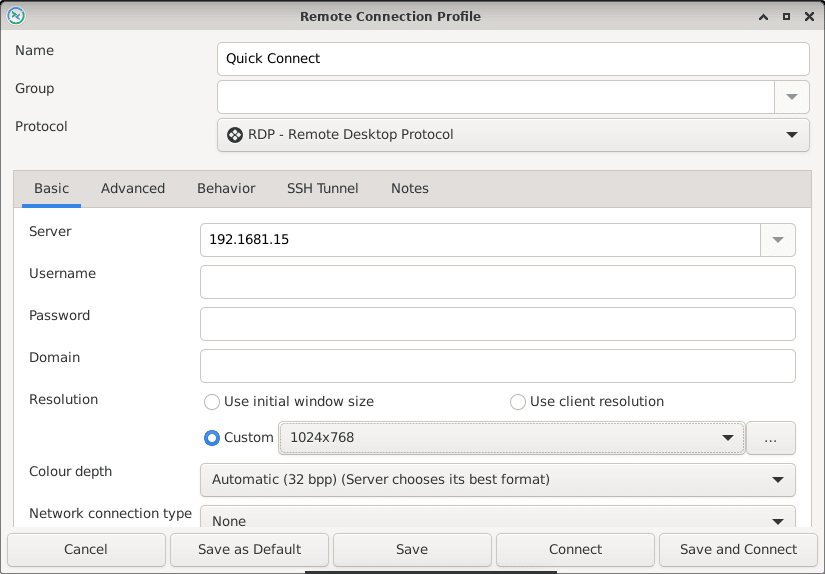How To Install Remmina on AlmaLinux 9

In today’s interconnected world, remote desktop software has become an essential tool for IT professionals, system administrators, and even casual users. Remmina, a powerful and versatile remote desktop client, stands out as a popular choice for Linux users. This article will guide you through the process of installing Remmina on AlmaLinux 9, a robust and enterprise-grade Linux distribution. Whether you’re managing servers, providing remote support, or accessing your work computer from home, mastering Remmina on AlmaLinux 9 will significantly enhance your productivity and flexibility.
What is Remmina?
Remmina is an open-source, feature-rich remote desktop client for Linux and other Unix-like operating systems. It supports multiple protocols, including RDP (Remote Desktop Protocol), VNC (Virtual Network Computing), SSH (Secure Shell), and SPICE (Simple Protocol for Independent Computing Environments). This versatility makes Remmina an all-in-one solution for remote connections.
Key features of Remmina include:
- Multi-protocol support
- Tabbed interface for managing multiple connections
- Advanced SSH tunneling capabilities
- Customizable connection profiles
- Plugin system for extended functionality
By using Remmina, you can seamlessly connect to Windows, macOS, and other Linux machines, making it an indispensable tool for cross-platform remote management and support.
Prerequisites for Installing Remmina
Before we dive into the installation process, let’s ensure you have everything needed to successfully install Remmina on AlmaLinux 9:
- A system running AlmaLinux 9 with root or sudo access
- A stable internet connection for downloading packages
- At least 100 MB of free disk space
- Basic familiarity with the command line interface
It’s also recommended to have your system fully updated before proceeding with the installation to avoid any potential conflicts or compatibility issues.
Preparing Your AlmaLinux 9 System
To ensure a smooth installation process, let’s start by updating your AlmaLinux 9 system and installing necessary dependencies. Open a terminal and run the following commands:
sudo dnf update -y
sudo dnf install epel-release -y
sudo dnf install dnf-plugins-core -yThese commands will update your system, install the EPEL (Extra Packages for Enterprise Linux) repository, and add the DNF core plugins, which will be useful for managing software repositories.
Next, install some essential development tools and libraries that Remmina depends on:
sudo dnf groupinstall "Development Tools" -y
sudo dnf install gtk3-devel glib2-devel libsoup-devel freerdp-devel libssh-devel libvncserver-devel libappindicator-gtk3-devel libsecret-devel json-glib-devel libgcrypt-devel libsodium-devel spice-gtk3-devel -yThese packages provide the necessary libraries and development files for building and running Remmina on AlmaLinux 9.
Installing Remmina on AlmaLinux 9
There are two primary methods to install Remmina on AlmaLinux 9: using the EPEL repository or building from source. We’ll cover both approaches to give you flexibility in choosing the best method for your needs.
Method 1: Using EPEL Repository
The EPEL repository provides a pre-built package for Remmina, making installation quick and straightforward:
sudo dnf install remmina -yThis command will download and install Remmina along with its dependencies. Once completed, you can launch Remmina from your application menu or by typing remmina in the terminal.
Method 2: Building from Source
For those who prefer the latest features or need a custom build, compiling Remmina from source is an excellent option. Follow these steps:
- Clone the Remmina repository:
git clone https://gitlab.com/Remmina/Remmina.git - Navigate to the Remmina directory:
cd Remmina - Create a build directory and navigate to it:
mkdir build && cd build - Configure the build:
cmake .. - Compile Remmina:
make - Install Remmina:
sudo make install
After installation, you can launch Remmina by typing remmina in the terminal or finding it in your application menu.

Configuring Remmina After Installation
Once Remmina is installed, it’s time to configure it for your specific needs. Launch Remmina and follow these steps for initial setup:
- Click on the “+” button to create a new connection profile.
- Choose the protocol you want to use (e.g., RDP for Windows, VNC for many Linux distros).
- Enter the necessary connection details, such as the remote host’s IP address or hostname.
- Configure additional options like screen resolution, color depth, and authentication method.
- Save the profile for quick access in future sessions.
You can create multiple profiles for different remote systems, making it easy to manage and connect to various machines with just a few clicks.
Using Remmina on AlmaLinux 9
Now that Remmina is installed and configured, let’s explore how to use it effectively on AlmaLinux 9:
Connecting to Remote Desktops
- Launch Remmina from your application menu or terminal.
- Select the connection profile you created earlier.
- Click “Connect” to establish the remote desktop session.
- If prompted, enter your login credentials for the remote system.
Managing Multiple Connections
Remmina’s tabbed interface allows you to manage multiple connections simultaneously:
- Use the “+” button to open new connections in separate tabs.
- Switch between connections by clicking on the respective tabs.
- Use keyboard shortcuts (Ctrl+Tab) to cycle through open connections quickly.
Take advantage of Remmina’s features like full-screen mode, file transfer (where supported), and quick disconnect options to enhance your remote desktop experience.
Troubleshooting Common Issues
While Remmina is generally reliable, you may encounter some issues. Here are solutions to common problems:
Connection Problems
- Verify that the remote host is accessible and the correct port is open.
- Check your firewall settings on both the local and remote machines.
- Ensure you’re using the correct protocol and authentication method.
Performance Issues
- Adjust the color depth and resolution in the connection settings.
- Enable or disable hardware acceleration depending on your system’s capabilities.
- Check your network connection quality and bandwidth.
Plugin-related Issues
- Ensure all required plugins are installed and up-to-date.
- Reinstall plugins if they’re not functioning correctly.
- Check Remmina’s log files for specific error messages related to plugins.
Updating and Maintaining Remmina
To keep Remmina running smoothly on AlmaLinux 9, follow these maintenance tips:
- Regularly update Remmina using your package manager:
sudo dnf update remmina - Check for plugin updates and install them as needed.
- Periodically review and update your connection profiles to ensure they reflect any changes in your remote systems.
Congratulations! You have successfully installed Remmina. Thanks for using this tutorial for installing the Remmina remote desktop on your AlmaLinux 9 system. For additional help or useful information, we recommend you check the official Remmina website.